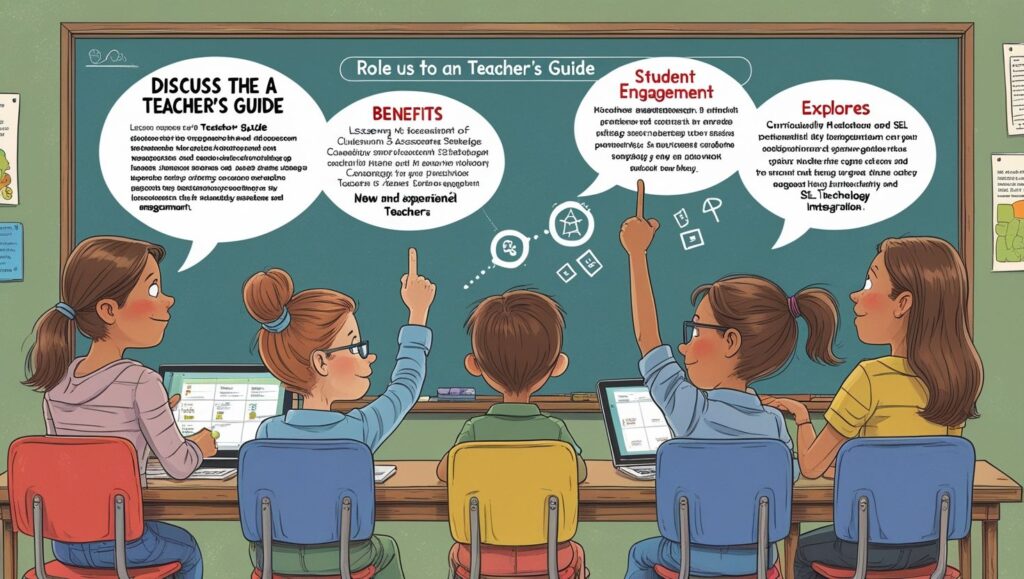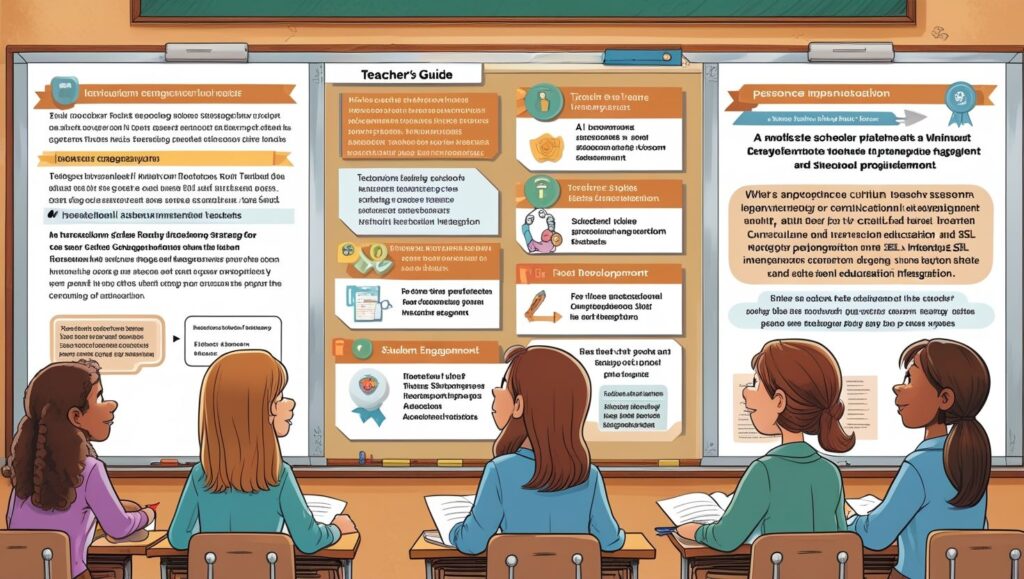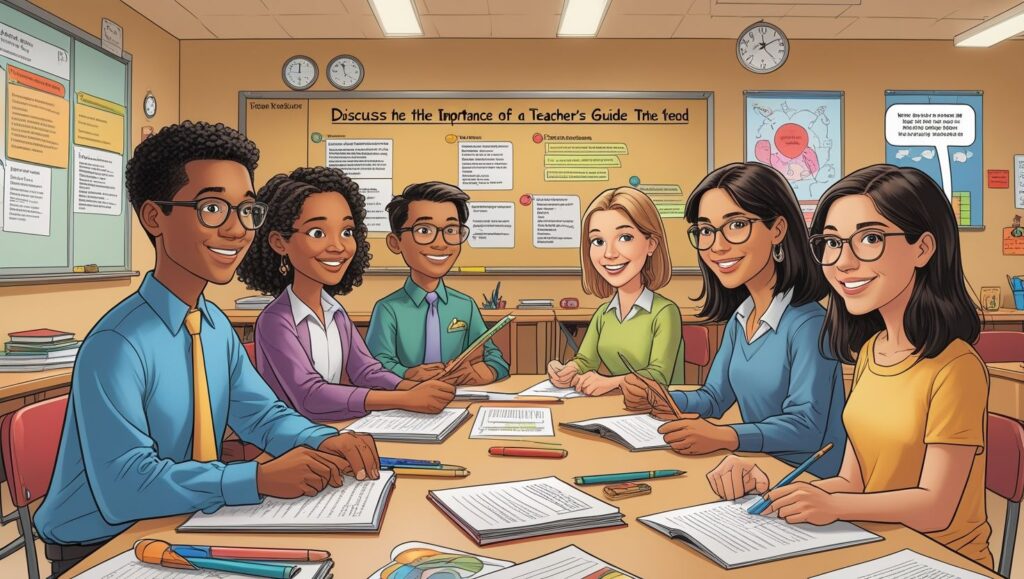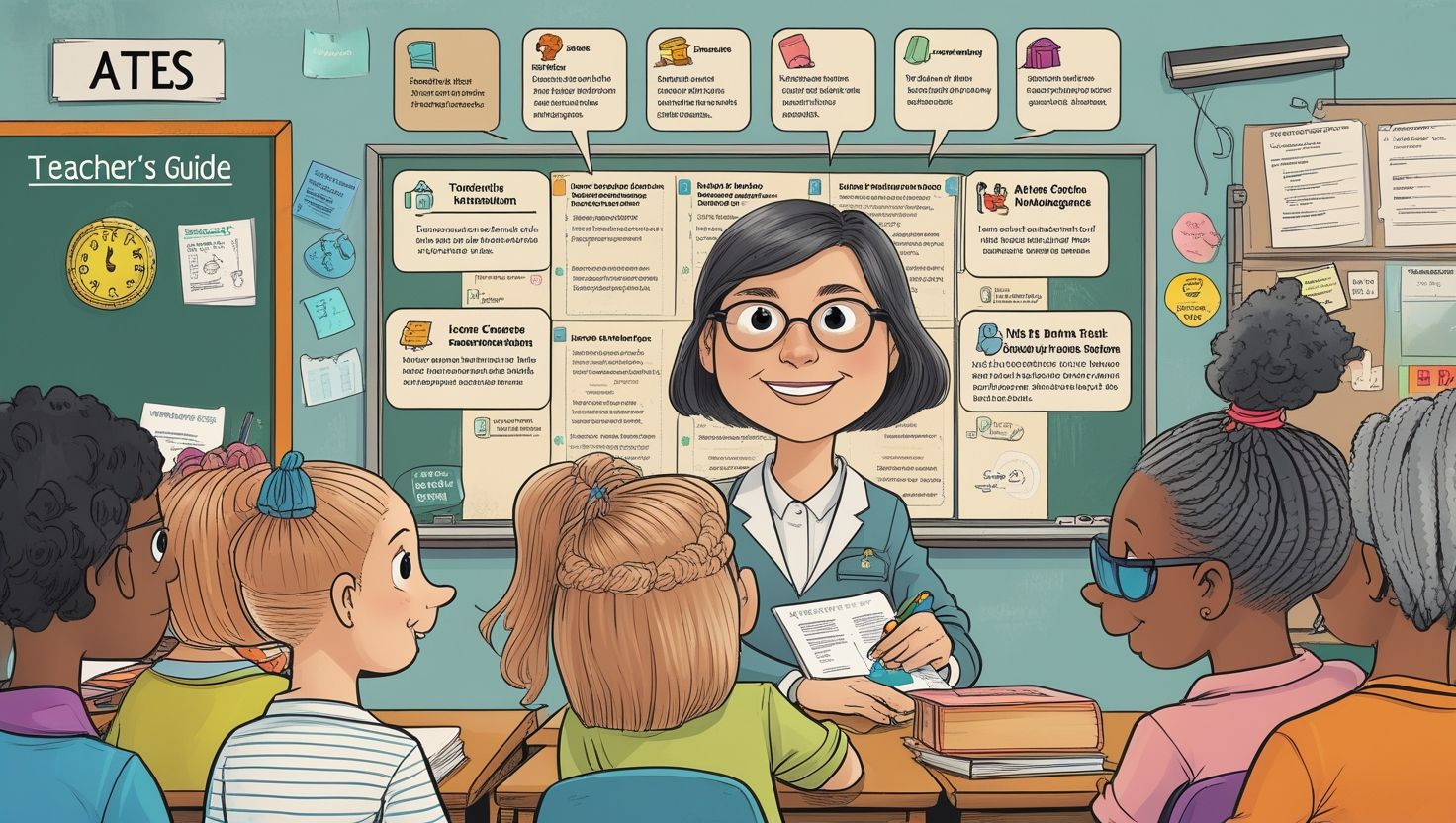Introduction
The Teacher’s Guide in Education for Learning, Education serves as the cornerstone of personal growth and societal progress, shaping individuals into knowledgeable, skilled, and responsible citizens. At the heart of this transformative process are teachers, whose expertise and dedication mold future generations. To support educators in their mission, a Teacher’s Guide acts as a vital resource, offering structured lesson plans, pedagogical strategies, and assessment tools.
In today’s rapidly evolving educational landscape, a well-structured Teacher’s Guide is indispensable. It not only provides a framework for delivering curriculum-aligned lessons but also equips teachers with innovative instructional techniques, classroom management strategies, and student engagement methods. Whether for novice educators seeking guidance or seasoned professionals looking for fresh approaches, a Teacher’s Guide ensures consistency, efficiency, and effectiveness in teaching.
This article delves into the critical role of Teacher’s Guides in modern education. It examines their importance in ensuring structured lesson delivery, supporting teachers at all experience levels, and enhancing student learning outcomes. Additionally, it explores the essential components of an effective guide, best practices for its implementation, and the evolving trends shaping its future. By understanding these aspects, educators can maximize the potential of Teacher’s Guides to create dynamic, inclusive, and impactful learning environments.
1. The Importance of a Teacher’s Guide in Education
1.1 Ensures Structured Lesson Delivery
A Teacher’s Guide provides a systematic approach to lesson planning, ensuring that educators follow a coherent and logical sequence. By aligning lessons with curriculum standards, it guarantees that all required learning objectives are met. This structured delivery helps teachers maintain focus, avoid redundancy, and cover essential topics within the allotted time.
Moreover, a well-organized guide breaks down complex concepts into manageable segments, making instruction more digestible for students. It includes pacing suggestions, ensuring that teachers neither rush through material nor linger excessively on a single topic. This balance is crucial for maintaining student engagement and comprehension.
Additionally, structured lesson plans reduce preparation time, allowing teachers to dedicate more energy to interactive and creative teaching methods rather than administrative planning. By offering clear instructions, suggested activities, and assessment checkpoints, the guide serves as a reliable roadmap for effective classroom instruction.

1.2 Supports New and Experienced Teachers
For new teachers, a Teacher’s Guide is an invaluable resource that provides ready-to-use lesson plans, reducing the anxiety associated with curriculum delivery. It offers foundational strategies for classroom management, student engagement, and assessment, helping novice educators build confidence in their teaching abilities.
Experienced teachers also benefit from updated guides that introduce innovative methodologies, such as project-based learning, flipped classrooms, and technology integration. These resources allow seasoned educators to refine their techniques, stay current with pedagogical trends, and adapt to diverse student needs.
Furthermore, Teacher’s Guides foster collaboration among educators by providing a common framework for lesson planning. This consistency ensures that all students, regardless of their instructor, receive a uniform and high-quality education.
1.3 Enhances Student Engagement
Engaging students in the learning process is a persistent challenge, but a well-designed Teacher’s Guide offers solutions through interactive activities, multimedia resources, and differentiated instruction techniques.
For instance, guides may include group discussions, hands-on experiments, and digital tools like educational apps and videos. These methods cater to various learning styles—visual, auditory, and kinesthetic—ensuring that all students remain actively involved.
Additionally, guides often incorporate real-world applications of concepts, making lessons more relatable and meaningful. By fostering curiosity and critical thinking, these strategies transform passive learners into active participants in their education.
1.4 Facilitates Assessment and Feedback
Effective assessment is key to measuring student progress and refining teaching strategies. A Teacher’s Guide provides formative and summative assessment tools, such as quizzes, rubrics, and project evaluations, enabling educators to track learning outcomes systematically.
These guides also offer techniques for constructive feedback, helping students understand their strengths and areas for improvement. By aligning assessments with learning objectives, teachers can ensure that evaluations are fair, comprehensive, and conducive to student growth.

2. Key Components of an Effective Teacher’s Guide
2.1 Curriculum Alignment
A Teacher’s Guide must align with national or institutional curriculum standards, clearly outlining learning objectives and expected competencies. This alignment ensures that instruction meets regulatory requirements and prepares students for standardized assessments.
2.2 Detailed Lesson Plans
Step-by-step instructions, time allocations, and teaching aids (e.g., slides, worksheets) are essential for seamless lesson delivery. These plans should include warm-up activities, core instruction, practice exercises, and closure techniques.
2.3 Instructional Strategies
Differentiated instruction, collaborative learning, and technology integration should be emphasized to address diverse learner needs. Strategies like think-pair-share, debates, and multimedia presentations enhance engagement.
2.4 Classroom Management Tips
Effective guides offer behavior management techniques, pacing strategies, and inclusivity practices to maintain a positive learning environment.
2.5 Assessment Tools
Rubrics, self-assessments, and peer reviews help evaluate student performance objectively. Guides should also provide remediation strategies for struggling learners.
2.6 Additional Resources
Supplementary materials, professional development recommendations, and digital resources extend learning beyond the classroom.
3. Best Practices for Using a Teacher’s Guide
3.1 Adapt to Student Needs
Modify lessons based on learning styles, abilities, and cultural backgrounds to ensure relevance and inclusivity.
3.2 Integrate Technology
Use interactive whiteboards, educational apps, and online platforms to enhance engagement and facilitate self-paced learning.
3.3 Encourage Collaborative Learning
Group projects, peer teaching, and discussions foster teamwork and critical thinking.
3.4 Continuous Professional Development
Attend workshops and stay updated with pedagogical research to refine teaching methods.
3.5 Seek Feedback and Improve
Collect student and peer feedback to adjust instructional strategies for better outcomes.
4. The Evolving Role of Teacher’s Guides
4.1 Digital and Interactive Guides
E-books with embedded videos and online lesson planners enhance accessibility and interactivity.
4.2 Personalized Learning Approaches
AI-driven recommendations tailor lessons to individual student needs, improving outcomes.
4.3 Focus on Social-Emotional Learning (SEL)
Guides now include activities that promote empathy, resilience, and emotional intelligence.
4.4 Globalization and Multicultural Education
Incorporating diverse perspectives fosters global citizenship and cultural awareness.

5. Challenges in Implementing Teacher’s Guides
5.1 Rigidity vs. Flexibility
Over-reliance on guides may stifle creativity; balance is needed to adapt to classroom realities.
5.2 Accessibility Issues
Not all schools have access to updated or digital guides, creating disparities in education quality.
5.3 Keeping Up with Reforms
Frequent curriculum changes necessitate continuous updates and teacher training.
6. Conclusion
A Teacher’s Guide is a powerful tool that enhances instructional quality, supports educators, and promotes student success. However, its effectiveness depends on adaptability, inclusivity, and continuous improvement.
As education advances, guides must incorporate technology, SEL, and multicultural perspectives to meet diverse learner needs. By leveraging these resources thoughtfully, teachers can inspire lifelong learning and prepare students for a dynamic future.
Aspacted Questions
1. What is a Teacher’s Guide, and why is it important?
2. How does a Teacher’s Guide benefit new vs. experienced teachers?
3. What are the key components of an effective Teacher’s Guide?
4. How can teachers adapt a Teacher’s Guide to diverse classrooms?
5. What role does technology play in modern Teacher’s Guides?
6. How do Teacher’s Guides address Social-Emotional Learning (SEL)?
7. What challenges exist in implementing Teacher’s Guides?
8. How can schools ensure effective use of Teacher’s Guides?
9. What is the future of Teacher’s Guides?
10. How does a Teacher’s Guide promote inclusive education?

8 thoughts on “The Teacher’s Guide in Education for Learning”